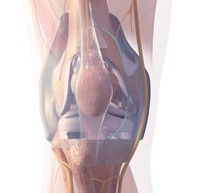Advertisement
Grab your lab coat. Let's get started
Welcome!
Welcome!
Create an account below to get 6 C&EN articles per month, receive newsletters and more - all free.
It seems this is your first time logging in online. Please enter the following information to continue.
As an ACS member you automatically get access to this site. All we need is few more details to create your reading experience.
Not you? Sign in with a different account.
Not you? Sign in with a different account.
ERROR 1
ERROR 1
ERROR 2
ERROR 2
ERROR 2
ERROR 2
ERROR 2
Password and Confirm password must match.
If you have an ACS member number, please enter it here so we can link this account to your membership. (optional)
ERROR 2
ACS values your privacy. By submitting your information, you are gaining access to C&EN and subscribing to our weekly newsletter. We use the information you provide to make your reading experience better, and we will never sell your data to third party members.
Materials
Newscripts
Sky-high Hemp, Cannabinoids In Medicine Cabinets
by Manny I. Fox Morone
April 20, 2015
| A version of this story appeared in
Volume 93, Issue 16

It’s April 20, and spring is in the air. And that’s not the only thing. Yes, recreational cannabis has created a cloud of hoo-ha in the U.S., but Derek R. Kesek, founder of hemp-based solutions company Hempearth, sees something else when he looks to the sky.

“I’m not an engineer, but I’m definitely a Renaissance man,” says the Ontario-based entrepreneur when speaking about Hempearth’s latest project: the first modern airplane made of hemp. Kesek’s mission is rooted in tapping the potential of industrial hemp (Cannabis) and bringing the carbon-neutral or -negative material into the public eye, and what better way than making a plane out of it?
The idea took off slowly. “I called plane manufacturers, and they laughed at me, of course,” Kesek tells Newscripts. But four months later, after doing some research of its own, a Florida-based manufacturer with a potential plane design was flying him over to sign a contract for the production of this and future aircraft. One of Kesek’s stipulations was that the plane had to be at least 75% hemp, including the exterior panels, the interior, and the biofuel.
The plane’s panels are made of woven hemp cloth stretched and fit into a mold that then has a natural resin cured on top of it. The end result is a custom shaped material that is lighter, more sustainable, and at least as strong as the fiberglass panels used for current airplanes.
Ironically, Kesek has never built or even flown a plane. Upon completion of the project next year, Kesek plans a maiden voyage for his hemp plane in Kitty Hawk, N.C.
To spur the hemp industry, Kesek has pledged to keep all technology that comes of his efforts open source, imitating Tesla’s model for driving the electric car industry. Learn more about Kesek’s project at hempearth.net/the-hemp-plane.
Cannabis entrepreneurship doesn’t have to be on such a grand scale. Axim Biotechnologies, a New York City-based pharmaceutical and cosmetics firm, recently unveiled its oral and personal care line of toothpastes, mouthwashes, and creams, all of which contain naturally derived Cannabinoid Active Ingredients.

Don’t sound the alarm just yet. Axim assures Newscripts that its products are perfectly legal, avoiding the use of the controlled component of hemp, tetrahydrocannabinol, or THC.
For about 15 years, the anti-inflammatory and antibacterial properties of THC’s biosynthetic precursor cannabigerol (CBG) has been known. CBG is particularly effective for reducing intraocular pressure in glaucoma patients, 200,000 of whom are blinded in the U.S. each year. But CBG has received little attention because of the regulatory controls on growing hemp as well as the hype surrounding medical and recreational THC. Axim’s new products mark the first commercial use of CBG.
Axim’s chief executive officer, George E. Anastassov, notes that the cannabis strains they use—each under 30-year patent protection in Europe—have been bred to contain little to no THC, unlike strains used recreationally, which are bred for the exact opposite properties.
Cannabinoids’ low water solubility also hasn’t helped their case in the pharmaceutical industry. That’s why Axim developed a proprietary “freeze-drying technique” that converts industrial hemp oil into water-soluble powders, perfect for use in personal care products.
Anastassov says the products will be comparable in price to their non-cannabinoid-containing counterparts. The toothpaste and mouthwash are retail-ready and should soon be helping mouths in the U.S. feel a bit more cool.
Manny I. Fox Morone wrote this week’s column. Please send comments and suggestions to newscripts@acs.org.





Join the conversation
Contact the reporter
Submit a Letter to the Editor for publication
Engage with us on Twitter